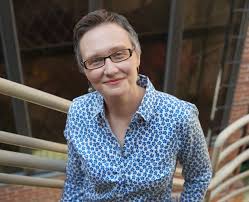This report was produced in conjunction with the webinar, “Improving economic opportunity for older workers,” co-sponsored by Brookings and the Kellogg Public-Private Initiative.
In the United States, as in many other nations with aging populations, policymakers have embraced the notion that most individuals can (and should) extend their working years. The large majority of Americans approaching retirement will not have enough income to maintain their preretirement standard of living. During the past 30 years, private workplace pensions have collapsed, and the United States, like other nations, has effectively cut public pension benefits by raising the retirement age. Working longer is widely proposed as the best way for older people to boost their fragile retirement security (e.g., Maestas and Zissimopoulos 2010; Munnell and Sass 2009; Wise 2017).
Conversations about how to promote working longer—in the sense of remaining in paid work beyond traditional retirement ages—often begin with a deceptively simple question: How can older Americans be encouraged to delay retirement? However, there are at least two embedded assumptions when we equate working longer with choosing to delay retirement: first, that older Americans have jobs from which to retire; and second, that older workers choose the timing of their retirement. Both assumptions were problematic even before the COVID-19 pandemic. They are even more problematic now.
Connecting the dots between job quality in middle age and working longer requires a life course perspective. This perspective bridges a common divide in U.S. research on the labor force. A growing body of research examines what is driving older workers’ retirement decisions, including the adequacy or inadequacy of Social Security benefits, individual wealth, health and health insurance, spouses’ retirement decisions, and labor demand (Coile 2015, 2018), but this research typically excludes those who are already out of the labor force in their late 50s or early 60s. A separate, large literature examines changes in labor force participation among men and women in prime ages, conventionally defined as ages 25 to 54 (Binder and Bound 2019; Goldin and Mitchell 2017). Bringing these two lines of research together calls attention to the relationship between employment during the prime years and an individual’s chances of working later in life. As the pandemic throws long-term prospects for workers in their 40s and 50s into jeopardy, a life course perspective on working longer will become even more crucial.
When we look at the scale of labor force nonparticipation among Americans in their 50s, especially those with lower levels of education, it becomes clear that we need to rethink substantially what ages we have in mind when we talk about extending working lives. In the American policy conversation about working longer, age 67 (the Social Security full retirement age for those born in 1960 and later) and age 70 (the age at which maximum Social Security benefits become available) stand out as benchmarks. But the issues with working longer begin much younger for many workers—earlier by a decade or more for many.
Over the long run, policymakers should aim for a labor market in which workers of all ages, including those without college degrees, have access to decent jobs that offer adequate pay, sustainable schedules, and the flexibility for employees to care for themselves and their families. We would expect such a labor market to produce lower rates of job turnover for lower-wage workers in their 50s. Lower turnover would reduce the number of people who retire early because they have lost a job and cannot find another suitable one. Longer and more-stable employment histories, in turn, produce higher Social Security retirement benefits and retirement savings. Better jobs would increase both the likelihood and the value of working longer.
Read the paper here for a complete list of potential solutions.
The author did not receive financial support from any firm or person for this article or from any firm or person with a financial or political interest in this article. She is not currently an officer, director, or board member of any organization with an interest in this article.
The Brookings Institution is committed to quality, independence, and impact.
We are supported by a diverse array of funders. In line with our values and policies, each Brookings publication represents the sole views of its author(s).







